Two Versatile, Go-Almost-Anywhere Compact Wagons
Auto manufacturers have all but abandoned the small station wagon market, switching their factories to building crossovers and sport utility vehicles. But not Volkswagen. They offer two compact station wagons in three configurations: SportWagen in FWD and AWD and the Alltrack in AWD only. Based on the successful Golf platform, the SportWagen and Alltrack continue the Golf’s fun-to-drive heritage, but with more carrying space, and in the case of the Alltrack, higher ground clearance.
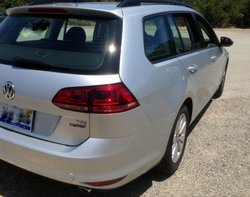
Clean Fleet Report had the opportunity to drive the SportWagen AWD and Alltrack AWD back-to-back over a two-week period. Volkswagen calls its AWD system 4Motion, which is a permanent all-wheel-drive system engineered to eliminate wheel spin under almost all conditions. 4Motion is also designed to automatically decouple the rear wheels when the driving load and conditions don’t require the additional traction, thusly saving fuel. However, when necessary—in fractions of seconds—the 4Motion system engages the rear wheels for seamless and instant needed traction. More on this later.
Drivetrain
Both the 2017 Volkswagen SportWagen and Alltrack 4Motion use an intercooled and turbocharged, 16-valve 1.8-liter inline four-cylinder engine, putting out 170 horsepower and 199
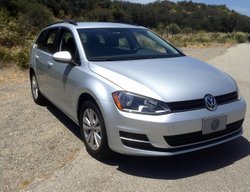
pounds-feet of torque while running on regular gasoline. Our all-wheel-drive test cars were mated to a smooth-shifting, six-speed DSG (Direct-Shift Gearbox) automatic transmission. A DSG transmission has an electronically controlled dual-clutch that helps it deliver faster and smoother shifts, while eliminating a torque converter.
EPA fuel economy for both cars is 22 city/30 highway/25 combined. For comparison, if you were to purchase the 2017 Volkswagen SportWagen with front-wheel-drive, your fuel economy estimates would be 25 city/34 highway/29 combined. This is a significant increase, one which will be touched on later in the FWD vs. AWD evaluation.
In real-world use, 899 miles of driving from the Los Angeles area to Yosemite and back (which included plenty of Sierra Mountain twisties and turns) saw our Alltrack 4Motion averaging 25.8 mpg. For the Golf SportWagen 4Motion, 307 miles of driving throughout Southern California, mostly on freeways, the average was 29.2 mpg.
It is important to note that the fuel economy numbers reported by Clean Fleet Report are non-scientific. They represent the reviewer’s driving experience, but should be similar to most drivers living in our reviewer’s cities. If you live in cold weather, high in the mountains, spend time in the city or stuck in rush hour traffic, then your numbers may differ.
Driving Experience: On the Road
The 2017 Volkswagen SportWagen and Alltrack 4Motion models handle with a responsiveness that requires little driver exertion; the handling edge goes to the Alltrack. While both are sure-footed driving experiences—with the 4Motion system adding extra grip and handling even in normal and dry conditions—the 18-inch Alltrack tires versus the 16-inch on the
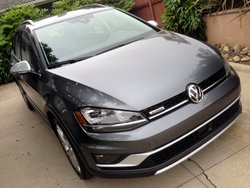
SportWagen 4Motion seemed to be the difference maker. The balance on these cars is so properly placed that body roll or pitching from side-to-side during aggressive turns is nearly non-existent. The extra 1.2-inch raised height of the Alltrack, providing 6.7-inches of ground clearance, was most noticeable in a more confident feeling and a better view of the road.
The handling characteristics through hard corners resulted in both cars pulling tighter the sharper you turn the wheel. The more you accelerate the more thrill, as both cars flowed easily through the corners. The power-assisted front vented and rear solid discs, with anti-lock brakes, stopped the car straight without brake fade. Electronic stability control is standard, making for well-balanced cars that are easy to control and drive.
The front suspension is strut-type with coil springs, with multi-link and coil springs in the rear and anti-roll bars all the way around. The rack-and-pinion electric power steering has been programmed to provide excellent road feel. Highway 70+ mph cruising was solid and confident for both the SportWagen and Alltrack 4Motion.
Driving Experience: Interior
The 2017 Volkswagen SportWagen and Alltrack 4Motion have neat and tidy interiors with a clean fit and finish. Nothing fancy, trendy or quirky. The usual German simplicity, with a good mix of soft and hard plastics, were uncomplicated by fake woods or other design gimmicks. The white backlighting for the dash gauges added a premium element, which went along with the overall premium materials used throughout the interior.
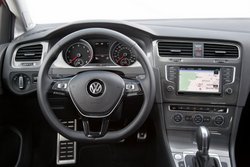
The center stack, angled towards the driver for easy viewing and use, has a capacitive and proximity sensor 6.5-inch color touchscreen. Capacitive technology is similar to what is found on smartphones and tablets and allows for functions such as swiping and pinch-zooming. While all this modern touchscreen technology is nice, Clean Fleet Report is a big fan of knobs and switches for the radio and climate controls. VW does a nice job of making it easy to operate the radio and HVAC system with the turn of a few knobs.
The centerpiece of the infotainment system (information and entertainment) is the eight-speaker audio system that delivers deep, full, crisp tones for the AM/FM/HD radio/MP3 and CD player. Also part of the infotainment system is SiriusXM, Bluetooth for telephone and streaming music, and VW’s Media Device Interface, or MDI, which includes an SD card and USB slots. Clean Fleet Report’s Alltrack had a Fender premium audio system that upped the sound quality even more. Standard on both cars is Volkswagen’s VW CarNet connected car technology that provides a seamless link for Apple CarPlay, Android Auto or a computer.

Our SportWagen had cloth seats, while the Alltrack had leatherette, a fabric technology that is comfortable to the touch, provides good air circulation and is durable. Both had heated front seats with good thigh bolstering and include a manual height and lumbar adjustable driver’s seat. There was a good choice of seat settings that, when combined with the height adjustable and telescoping steering column, a comfortable position could be found for the driver. Separating the front seats is a center console with a height-adjustable armrest/storage area. A nice upgrade are the steering wheel, gear shift lever and parking brake handle wrapped in leather.
As a four door, access to the rear seat is easy. Head, leg, elbow and shoulder room is accommodating for two adult passengers on long drives, three in a pinch for shorter trips. The 35.6-inches of legroom, HVAC vents, cupholders and reading lights made the rear seat an overall welcoming place to hang out.
Now we get into why buy a station wagon over a sedan or hatchback: the storage space. With the rear seat in the upright position there is 30.4 cu. ft. of space. But when the 60/40 split seatback (which has a ski pass-through opening) is folded to a flat position, the storage capacity roughly doubles to 60.6 cu. ft. This storage space is very usable as the roof is nearly flat and the liftgate is not raked at a severe angle. For even more storage, both cars come with roof racks.
Interior conveniences, standard or optional, include a power tilting and sliding sunroof, glove compartment with adjustable cooling, power windows, keyless access, multi-function steering wheel with audio and telephone controls, cruise control, power adjustable and manual folding, heated exterior mirrors, multiple power ports, front and rear reading lights and carpeted floor mats.
Driving Experience: Exterior
It is not unusual to hear comments about the SportWagen and Alltrack styling as being boring. Compared to its competitors, thankfully Volkswagen has not gone the route of squaring-off the corners and adding all sorts of scoops and vents. The Golf family may be described as plain, but I find them to be refreshing in their clean and simple design with round and soft lines. At 0.31 drag coefficient, the Sportwagen and Alltrack slip through the wind.
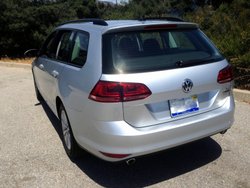
The 2017 Volkswagen SportWagen and Alltrack use a “cab backward” look with a recognizable steeply sloped hood, narrow grill and sleek Halogen or available B-Xenon headlights. The strong but subtle body line, or the line that runs the side of the car from front to back, leads to the horizontal tail lamps, while the roof has the smallest-of-small antenna and an integrated spoiler. Small and subtle Alltrack badging is found on the front grille and lift gate. The VW emblem on the liftgate serves three purposes: branding (with the VW logo), as the latch for opening the hatch and, lastly, when it flips open when putting the car in reverse—revealing the back-up camera. Pretty crafty those German engineers.
Safety and Convenience
Clean Fleet Report’s 2017 Volkswagen SportWagen and Alltrack came with six airbags, a tire pressure monitoring system and an Intelligent Crash Response System. Standard or available safety features include a rearview camera, a blind spot monitor, lane departure warning, rear traffic alert, and forward collision warning and autonomous emergency braking. If you have never driven a car with these last two safety features, have your Volkswagen sales representative demonstrate them to you on the highway. Once you have used them, you will feel naked when driving a car that is not similarly equipped.
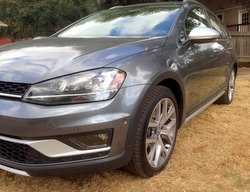
Both the SportWagen and Alltrack earned a Top Safety Pick by the Insurance Institute of Highway Safety and a 5 Star Overall rating by the National Highway Traffic Safety Administration. These are the highest ratings by each organization.
Pricing and Warranties
The 2017 Volkswagen SportWagen 4Motion with the manual transmission has a base price of $21,580, and the fully equipped SEL comes in at $29,970. Clean Fleet Report’s SportWagen S 4Motion was priced at $24,930.
The 2017 Volkswagen Alltrack S with a manual transmission has a MSRP of $26,950. Our top-tier SEL trim level Alltrack was $32,890. All prices do not include the $820 destination charge.
The 2017 SportWagen and Alltrack come with these warranties:
- New Vehicle 36 months/36,000 miles
- Powertrain 60 months/60,000 miles
- Corrosion Perforation 120 months/120,000 miles
- 24 Hour Roadside Assistance 36 months/36,000 miles
Observations: 2017 Volkswagen SportWagen 4Motion and Alltrack 4Motion
You won’t be disappointed owning either the Volkswagen SportWagen 4Motion or Alltrack 4Motion. However, here is a consideration when deciding which model to purchase.
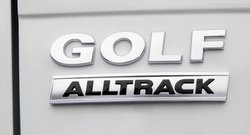
The 2017 SportWagen has a surprise edge—a front-wheel drive model that handles and rides as well as the 4Motion model, gets better fuel economy and costs $2,300 less. If you are looking for an AWD small station wagon, of which there are very few on the market, upgrade to the Alltrack 4Motion. The larger tires and wheels and increased ride height will be what you are looking for as it will satisfy almost all of your wet, slippery, snowy and muddy driving needs. Plus, the Alltrack 4Motion looks extra cool with those tires, wheels and ride height giving it a more impressive and bold look.
Go to your local Volkswagen dealer and take all three models out on the open highway. You may feel the front-wheel-drive SportWagen suits your commuting and around town needs, while the Alltrack 4Motion fits your adventurous lifestyle just sit better.
Whatever you end up buying, Happy Driving!
Related Stories You Might Enjoy:
Road Test: 2017 Mitsubishi Outlander
Top 10 Best MPG AWD SUVs/Crossovers
Road Test: 2014 Subaru Outback
Disclosure:
Clean Fleet Report is loaned free test vehicles from automakers to evaluate, typically for a week at a time. Our road tests are based on this one-week drive of a new vehicle. Because of this we don’t address issues such as long-term reliability or total cost of ownership. In addition we are often invited to manufacturer events highlighting new vehicles or technology. As part of these events we may be offered free transportation, lodging or meals. We do our best to present our unvarnished evaluations of vehicles and news irrespective of these inducements.
Our focus is on vehicles that offer the best fuel economy in their class, which leads us to emphasize electric cars, plug-in hybrids, hybrids and diesels. We also feature those efficient gas-powered vehicles that are among the top mpg vehicles in their class. In addition, we aim to offer reviews and news on advanced technology and the alternative fuel vehicle market. We welcome any feedback from vehicle owners and are dedicated to providing a forum for alternative viewpoints. Please let us know your views at publisher@cleanfleetreport.com.

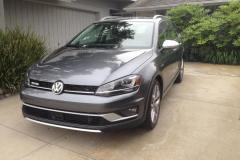
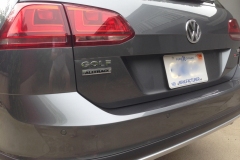
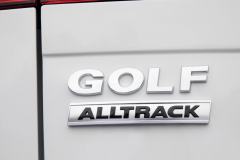
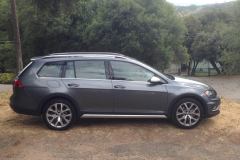
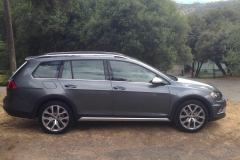
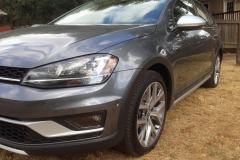

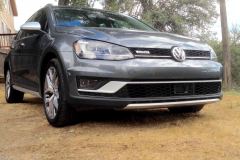
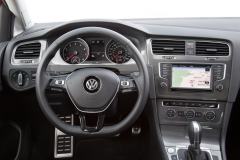
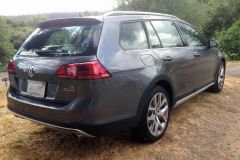
A very nice article on the car. I appreciate all of the cool gizmos and automated features. How these same appointments can become quite annoying when the engineering team has failed to work through all of the potential failure modes. For example a friend has a very nice Audi Q7. However, normal servicing has become quite a bother. It appears that the only way to get the hood to open is via the gentle caress of a sawblade though the inoperable electricaly activated hood latch.
@Jeff Hankins,
You have pointed out one of the scary aspects of the new era we have entered. I cringe a little when I realize most cars seem to be migrating to a keyless existence. But usually it works. And we believe it will get better and better. Hang in there! –ed.